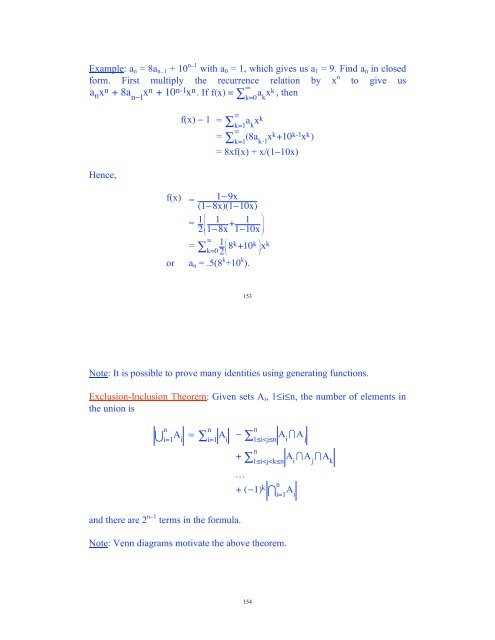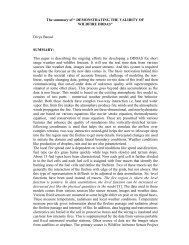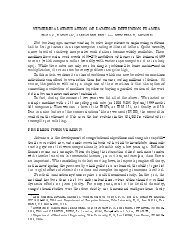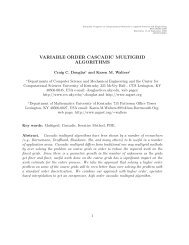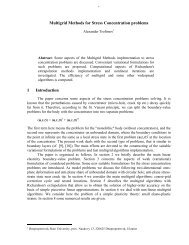Discrete Mathematics University of Kentucky CS 275 Spring ... - MGNet
Discrete Mathematics University of Kentucky CS 275 Spring ... - MGNet
Discrete Mathematics University of Kentucky CS 275 Spring ... - MGNet
You also want an ePaper? Increase the reach of your titles
YUMPU automatically turns print PDFs into web optimized ePapers that Google loves.
Example: a n = 8a n41 + 10 n41 with a 0 = 1, which gives us a 1 = 9. Find a n in closed<br />
form. First multiply the recurrence relation by x n to give us<br />
a n x n + 8a n!1<br />
x n + 10 n-1 x n !<br />
. If f(x) = " a k<br />
x k , then<br />
f(x) 4 1 =<br />
!<br />
!<br />
!<br />
k=1<br />
!<br />
k=1<br />
k=0<br />
a k<br />
x k<br />
= (8a k-1<br />
x k +10 k-1 x k )<br />
= 8xf(x) + x/(1410x)<br />
Hence,<br />
f(x) = 1!9x<br />
(1!8x)(1!10x)<br />
= 1 "<br />
1<br />
2 1!8x + 1!10x<br />
1<br />
$<br />
$<br />
'<br />
#<br />
!<br />
k=0<br />
!<br />
%<br />
'<br />
'<br />
&<br />
= 1 8 k +10 k<br />
2<br />
#<br />
&x k<br />
or a n = .5(8 k +10 k ).<br />
"<br />
$<br />
%<br />
153<br />
Note: It is possible to prove many identities using generating functions.<br />
Exclusion-Inclusion Theorem: Given sets A i , 1;i;n, the number <strong>of</strong> elements in<br />
the union is<br />
n<br />
i=1<br />
A i<br />
n<br />
i=1<br />
"<br />
! = ! A i<br />
! 1!i


